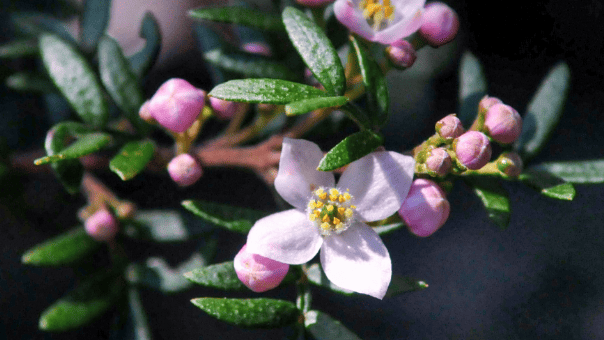
Reducing Deaths from Air Pollution
Exploreabout Reducing Deaths from Air Pollution
The catastrophic 2019-20 Australian bushfires burnt more than 10 million hectares of the Australian landscape, a scale unprecedented in recent history. The fires impacted the habitat for 17,197 species of plants, which is 69% of all Australian plant species1. Working with the Threatened Species Commissioner, scientists immediately began prioritising Australian Government funding to help plant and animal populations recover.
Plants hold the key to ecosystem recovery. Aiding the recovery of Australia’s plant species ensures Australia’s unique biodiversity is sustained into the future. With more than 87% of Australian plant species occurring nowhere else in the world, the impact of the 2019 and 2020 bushfires have global significance for plant conservation1.
But how do we quickly find out, on a national scale, which plant species recover well from fire?

The first stop for Dr Rachael Gallagher, Associate Professor of plant conservation and ecology at Western Sydney University, and her colleagues was AusTraits².
Developed in partnership with the ARDC and 19 institutions, AusTraits is a national database synthesising data on 448 plant traits across more than 21,000 Australian plant species.
Using AusTraits to access data on plant fire response traits, Dr Gallagher and her colleagues were able to combine data on a plant’s geographic range and fire response traits, fire extent and fire history to estimate the proportion of the species’ extent that burnt in the past as well as in the 2019–2020 fires1. They then used this information to strategically prioritise the species for recovery actions and conservation planning at a national scale.

Two species that grow near Mount Imlay National Park in southeast New South Wales are now high priority species for recovery actions, thanks to the assessment. These are Boronia imlayensis, the Mount Imlay boronia, and Eucalyptus imlayensis, the Imlay Mallee.
“Synthesised national information about plant response to fire was vital. If we hadn’t had AusTraits, which harmonises hard-won data on fire response from hundreds of Australian scientists who are our contributors, it would have been doubly difficult to be able to do the work for the Threatened Species Commissioner,” said Dr Gallagher.
The research has led to plant species and ecosystems being newly listed as threatened under the Environment Protection and Biodiversity Conservation Act 1999. This will help ensure Australia’s unique plant species recover, reproduce and thrive.
The AusTraits team worked with ecologists and herbariums across Australia to capture, harmonise and rigorously review data from over 300 sources. But understanding how a plant responds to fire is just one application of the database.
To date, over 70 scientific papers have cited AusTraits, and many more projects using the data are underway. AusTraits is facilitating studies in patterns of flowering, changes in traits with the environment, and patterns of richness across the landscape. It is also helping researchers devise next-generation models for simulating vegetation dynamics.

AusTraits has also garnered attention outside Australia, being lauded at a recent international Open Traits Network meeting as the new gold standard on how to make a reproducible trait database. Key to its global success is the ARDC’s co-investment model, said Dr Daniel Falster, ARC Future Fellow at UNSW Sydney and AusTraits project co-leader:
“The co-investment from the ARDC has helped make the international definitions of traits possible in two ways. One, it forces us to pay attention to vocabularies, which we probably would have overlooked otherwise like most ecologists would. Two, the ARDC provided the skills to navigate the very complex landscape of formal vocabularies and definitions.”
Following workshops with researchers to clearly define traits, the AusTraits team worked with experts from the ARDC Research Vocabularies Australia to establish a plant trait vocabulary.
AusTraits will soon be the first large traits database in the world to connect its trait concepts with those in all other major plant trait databases internationally. According to AusTraits Project Manager Dr Elizabeth Wenk, groups working on huge trait databases in Europe are already looking to AusTraits for transparent, defined, publishable and connected definitions.
AusTraits data is also being incorporated into the Atlas of Living Australia and the ARDC co-investment platform EcoCommons.
The AusTraits team is now working to apply the workflow building their database to organisms other than plants – and that is just the beginning.
“We envisage AusTraits as a framework for anyone who wants to build a database by putting lots of fragments of data together,” said Dr Falster.

Visit AustTraits.
The ARDC is continuing to address integrated FAIR datasets for earth and environmental research through the Planet Research Data Commons.
¹Gallagher, RV, Allen, S, Mackenzie, BDE, et al. High fire frequency and the impact of the 2019–2020 megafires on Australian plant diversity. Divers Distrib. 2021; 27: 1166– 1179. doi.org/10.1111/ddi.13265
²Falster DS, Gallagher RV, et al. (2021) AusTraits, a curated plant trait database for the Australian flora. Scientific Data 8, 254. doi.org/10.1038/s41597-021-01006-6
AusTraits received co-investment (doi.org/10.47486/DP720) from the ARDC. The ARDC is enables by the National Collaborative Research Infrastructure Strategy (NCRIS). It is a partnership between UNSW, Macquarie University, Royal Botanic Gardens and Domain Trust, Centre for Australian National Biodiversity Research, The University of Melbourne, Western Sydney University, EcoCommons, CSIRO, Landcare Research New Zealand, University of New England, Murdoch University, University of Arizona, Department of Agriculture, Water and the Environment: Australian Biological Resources Study, Parks Australia, Atlas of Living Australia, Arthur Rylah Institute for Environmental Research, NSW Department of Planning, Industry and Environment, Western Australia Department of Biodiversity, Conservation and Attractions, and Greening Australia.
Written by Jo Savill, ARDC. Edited by Mary O’Callaghan. Reviewed by Dr Daniel Falster, Dr Elizabeth Wenk, Dr Hervé Sauquet, Dr Rachael Gallagher (AusTraits).